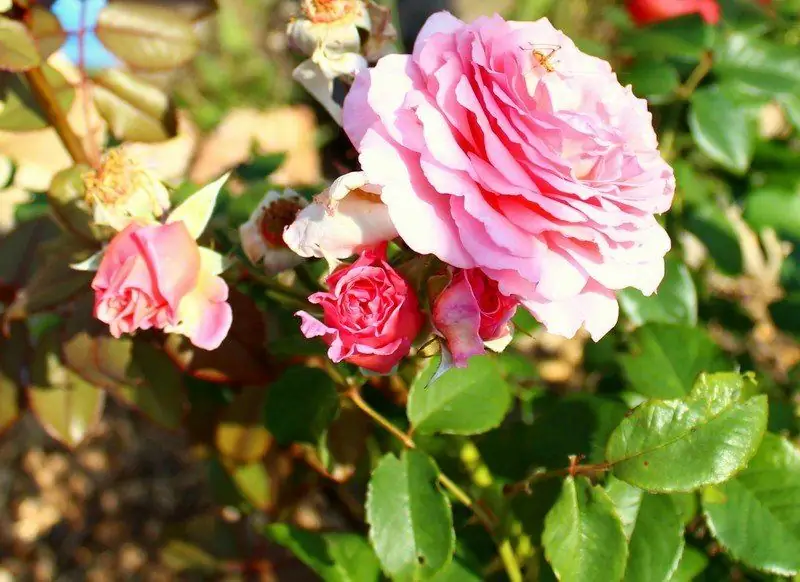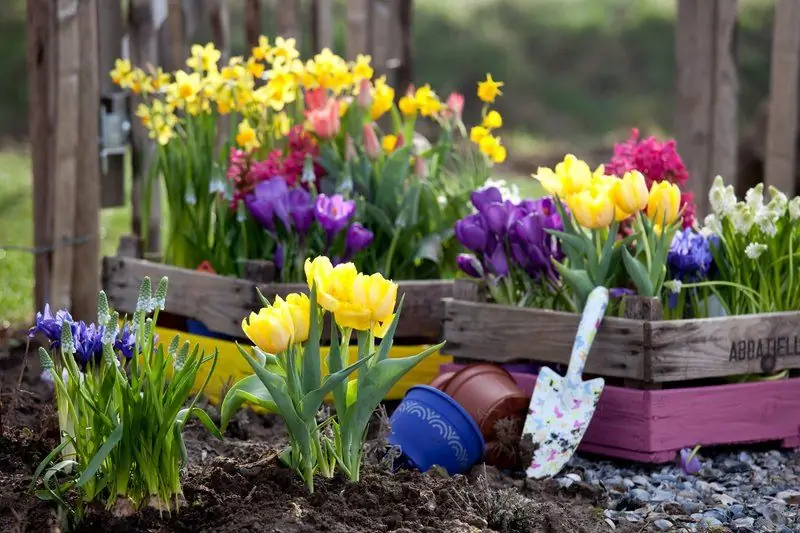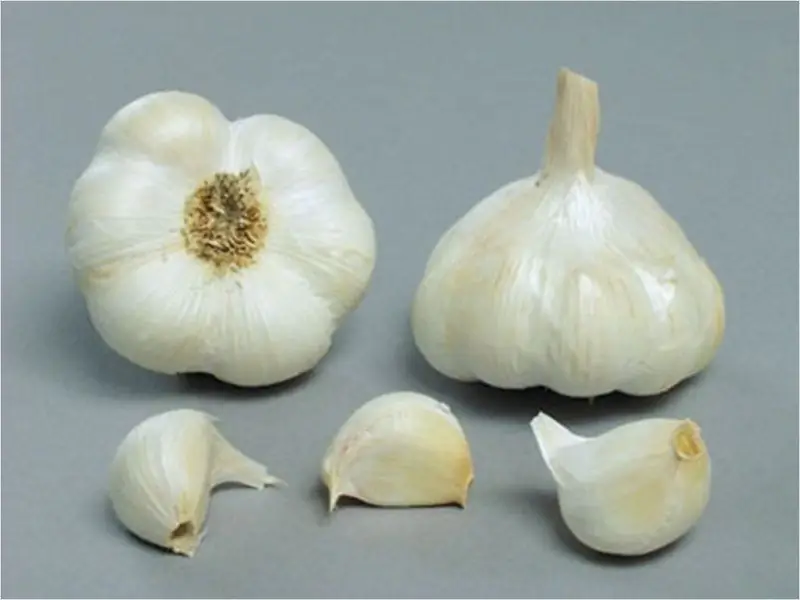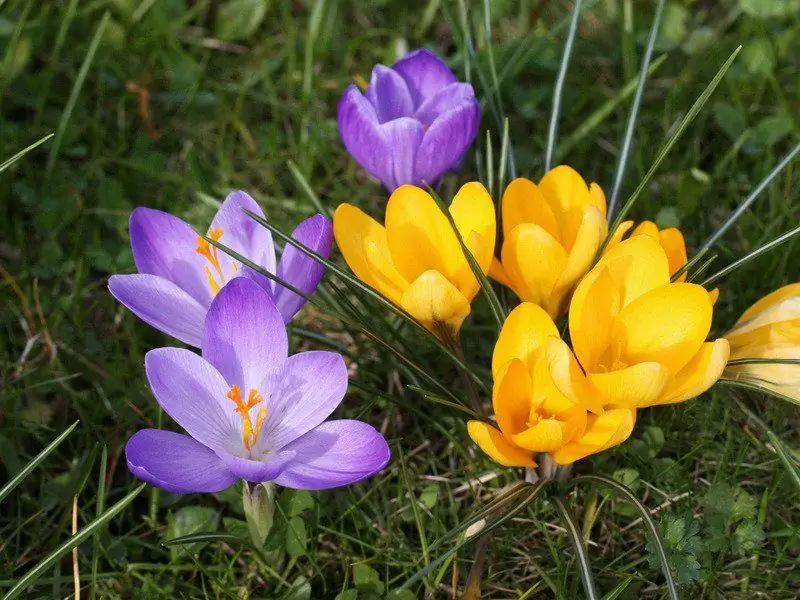
Table of contents:
- Author Bailey Albertson [email protected].
- Public 2023-12-17 12:53.
- Last modified 2025-06-01 07:32.
Secrets of spring planting of roses in different regions

Luxuriously blooming roses are quite capricious and require attention. Not only the splendor of flowering, but also the life expectancy of plants depends on the correctness and timeliness of their planting.
Where, when and how to plant roses in spring
Spring planting of roses is possible in all climatic zones, but there are regional peculiarities.
- In the central and northern regions of Russia, in the Urals and Siberia, all garden roses are planted only in spring. When planted in autumn, they do not have time to take root and freeze out in the first winter.
- In southern regions with mild winters down to -10 ° C and hot dry summers, autumn planting is preferable, bushes planted in spring react worse to dry summer heat. Where the climate is harsher, and in winter there are frosts below -10..- 15 ° C in the absence or small amount of snow, you have to plant roses in the spring and water them vigorously throughout the first summer.

Roses from green cuttings are planted only in spring
You can start planting roses in open ground as soon as the soil warms up to +10.. + 12 ° C. Approximate landing dates:
- subtropics of Crimea and the Caucasus - from February to April;
- black earth region - from late March to late April;
- middle strip - from April 20 to May 20;
- northern regions, Ural, Siberia - from early May to early June.
Selection and preparation of a site for a rose garden
For planting roses, choose an elevated area without stagnant water, with loose fertile soil, preferably with a slight slope to the south, east or west. Groundwater should be no closer than 1.5 m from the surface of the earth. The optimal acidity of the soil for roses is pH 5.5-6.5; more acidic soils are limed 1 year before planting.
It is desirable that the rose garden be protected by buildings or trees from the cold winter and dry summer winds. In the northern regions, the area for roses should be fully illuminated by the sun all day. In the southern regions, a slight sliding partial shade is permissible in the hot midday hours, so that the flowers fade less in the sun.
Planting holes are dug 50-60 cm deep and in diameter on loose soils and 60-70 cm on heavy clay soils. With heavy soil, 10 cm of a drainage layer of broken brick or crushed stone should be poured onto the bottom of the pit, and the earth extracted from the pit should be mixed with 1-2 buckets of sand.

On heavy clays, drainage from rubble or broken brick is poured at the bottom of the planting pits
Fertilizer rate for 1 planting hole:
- 5-10 kg of humus,
- 40-50 g superphosphate,
- 10-20 g of potassium salt.
The soil from the pit is evenly mixed with fertilizers and used when planting seedlings.
The distance between the rows of roses is 1-1.5 m, between the bushes in a row depends on their strength of growth:
- for vigorous varieties 1-1.2 m,
- for medium-sized 0.7-1 m,
- for the weak 0.5-0.6 m.
Preparing seedlings for planting
Before planting, the seedlings should be carefully examined, cutting out dried or moldy root tips to a healthy part. The stems should be lively, green and smooth.

A good seedling has strong, branched roots and vibrant green stems
Saplings with open roots just before planting should be soaked for a day in a bucket of water at room temperature.

Before planting, rose seedlings are soaked in water for a day.
Seedlings with an earthen clod are planted together with the ground. If in the container instead of normal soil there was a temporary peat filler, it is shaken off from the roots, and the roots themselves are straightened.
If the upper part of the cut stems of the seedlings is smeared with green paint, you do not need to do anything with this, and plant it. If the branches are completely covered with a layer of paraffin, it should be carefully removed with a rag, leaving only on the upper sections to protect against excessive evaporation.
Step-by-step instructions for planting roses in spring
-
Pour 1 bucket of water into the prepared planting hole.

Landing pit with water Before planting, pour a bucket of water into the pit.
- When the water is absorbed into the soil, pour a mound of fertile soil mixed with fertilizers on the bottom of the pit.
-
Place a rose seedling in the hole, spreading its roots to the sides.

Planting a rose When planting, the roots of the seedling must be spread to the sides
-
Align the position of the seedling so that the top of its root collar is 5 cm below the soil surface.

Planting depth of roses The seedling is positioned so that the upper part of its root collar is 5 cm below the soil surface
- Fill the hole with fertilized soil, compacting it so that there are no air voids left at the roots.
- Self-grown seedlings should be cut off immediately after planting, leaving 3-5 buds on each branch above the ground. Shop-cut seedlings with treated cuts are usually already pruned to the correct height and do not need to be pruned again.
-
Pour the planted rose with 5-10 liters of water.

Watering the planted rose The planted rose must be watered
In the future, rose bushes will need weekly watering of 1 bucket of water per bush, if there is no rain.
If seedlings with already blossoming leaves are planted, the first week after planting they should be shaded from the sun, covered with thin breathable agrofiber. A similar shelter is used to protect against possible return frost.
Planting roses on video
Will roses bloom in the year of planting?
Several factors affect the likelihood of roses blooming in the first year of planting:
- varietal features,
- the size of the seedling and its condition at the time of planting,
- the quality of plant care.
Usually, the abundant flowering of rose bushes occurs in the second year after planting, but individual flowers may appear in the first season. If a tiny, weak bush forms several buds at once, it is advisable to remove them so that the plant will better root by winter. Formed on a strong seedling of a hardy variety, 1-2 buds can be left and allowed to bloom.
In Kazan, the root offspring of winter-hardy park roses planted in spring gave single flowers in the first summer, after which they successfully wintered without any additional shelter.

Hardy park roses can bloom in the first year of planting.
Correctly performed spring planting of roses will ensure their excellent survival rate in the garden and annual abundant flowering for many years to come.
Recommended:
Planting Tulips In Spring: When And How To Plant Correctly In Open Ground And Pots

How to properly plant tulips in spring in soil and pots. When tulips are planted in spring, favorable days for planting according to the lunar calendar, nuances for the regions
Planting Strawberries In Spring In Open Ground: Terms And Instructions

Pros and cons of planting strawberries in open ground in spring, suitable timing. Step-by-step instructions for planting strawberries in spring
Planting Grapes With Cuttings And Seedlings In Spring: Terms And Instructions

When and how grapes are planted in spring, is it better than autumn. How a pit and a seedling are prepared, how is the planting process
Planting Garlic In Spring In Open Ground: When And How To Plant It Correctly, Instructions

How to plant garlic in spring in open ground: step by step instructions for preparing, planting and caring for the crop
Spring Bulb Flowers: Photos And Names

A selection of popular types of winter-hardy and unpretentious bulbous perennials blooming in spring: photos, brief descriptions, the main features of care
